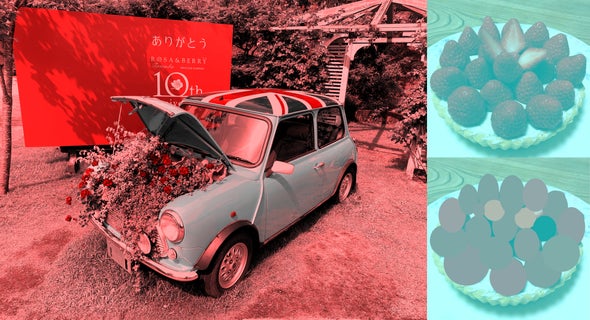Every object we see is a mirror to some extent. The glassy surface of a lake on a windless day is a perfect mirror when it reflects all light faithfully without scatter. But a red strawberry, too, is a mirror, though an imperfect one. The usual reason strawberries appear red is that they reflect reddish and absorb bluish wavelengths. The problem is, sometimes the light that falls on a strawberry does not have any red at all. How do we manage to see red strawberries in the absence of red wavelengths?
In the late 19th century German physiologist Ewald Hering showed that our experience of color is partly the result of our brain interpreting blue as opposite to yellow and red as opposite to green. By the time we perceive a strawberry as red, our perception is far afield from the original light wavelengths. Instead our visual system decides what the surface color of the strawberry probably is based on a process that identifies the light source and then discounts it.
The perceptual consequence of this process is called color constancy because it allows us to see an object’s color as constant, irrespective of the illumination conditions. Because of color constancy, strawberries look red at sunset and at noon, under cloudy skies at your local farmer’s market, and flooded by fluorescent lighting in your supermarket’s produce aisle.
The car photograph, created by vision scientist Akiyoshi Kitaoka with free online software, exemplifies a type of color constancy called the Land effect, after Edwin H. Land, inventor of the Polaroid camera. We see the automobile as blue, but the image contains only red and gray wavelengths.
The plate of strawberries, also created by Kitaoka, illustrates another form of color constancy. Each single berry is actually gray, but your brain begs to differ. Moreover, you do not see the strawberries as red, because you know what color they are supposed to be. Vision scientist Michael Bach modified the original picture by replacing each berry with a gray blob. The resulting image shows that prior knowledge of fruit coloring is irrelevant: even shapeless blobs will take on the color that our visual system assigns them based on our implicit assumptions about the light source.


